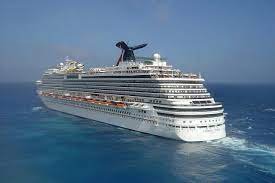KiwiClive
Veteran Member
Hey guys,
Does anyone here have any trouble with fouling of the keel cooling matrix?
Does the hot engine water keep the barnacles at bay?
We berth in an area where barnacles and oysters grow like crazy and I think the cooling could become an oyster farm within a month.
Looking to get either a Nordhavn or Selene and I must say I am not sold on the dry exhaust mainly because of noise (water cooled turbo with wet exhaust) and heat.
Any first hand experience would be really helpful.
Cheers,
Clive.
Does anyone here have any trouble with fouling of the keel cooling matrix?
Does the hot engine water keep the barnacles at bay?
We berth in an area where barnacles and oysters grow like crazy and I think the cooling could become an oyster farm within a month.
Looking to get either a Nordhavn or Selene and I must say I am not sold on the dry exhaust mainly because of noise (water cooled turbo with wet exhaust) and heat.
Any first hand experience would be really helpful.
Cheers,
Clive.


